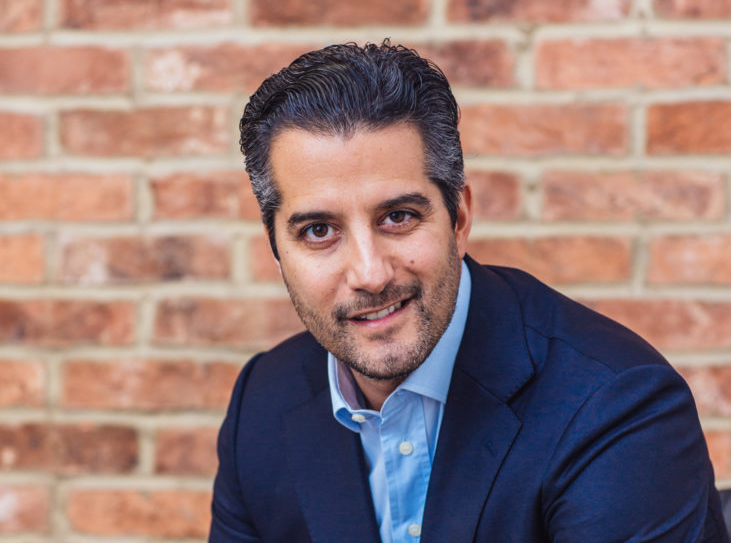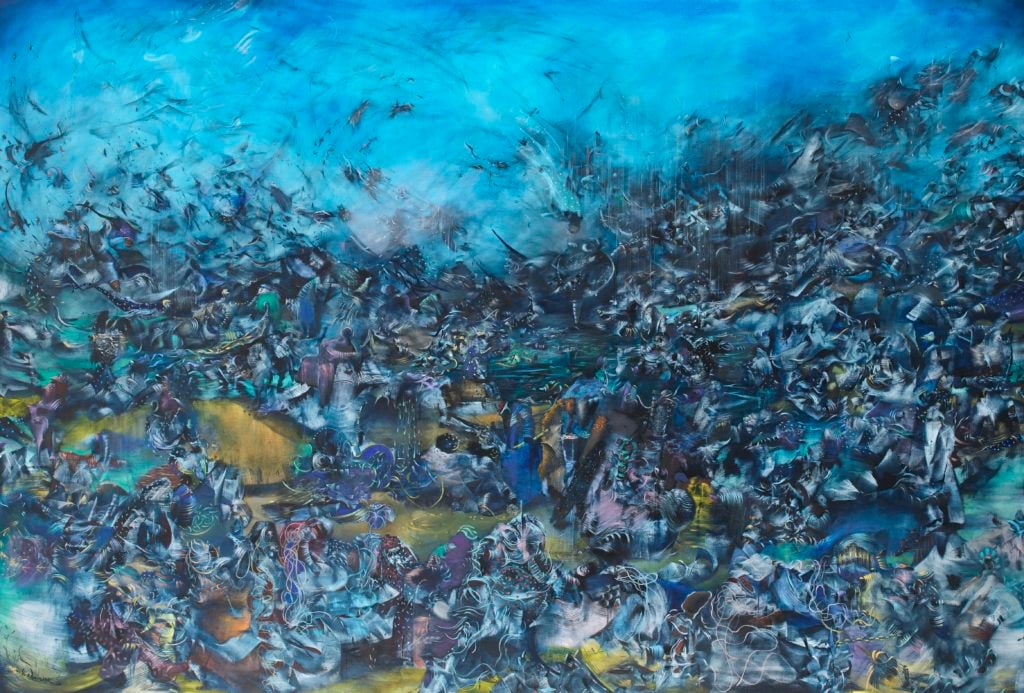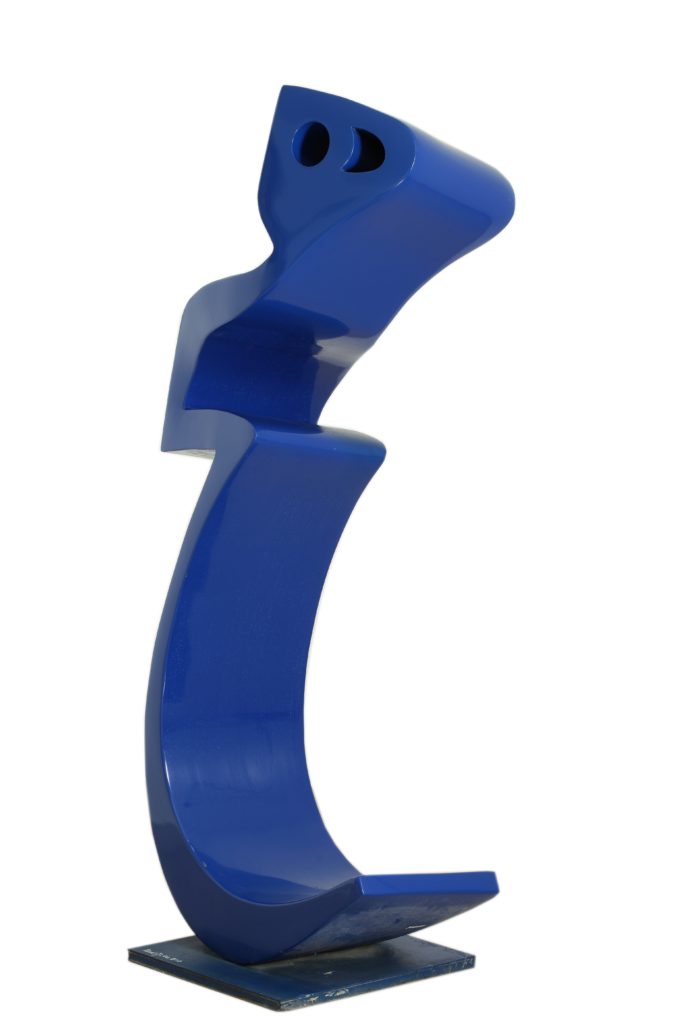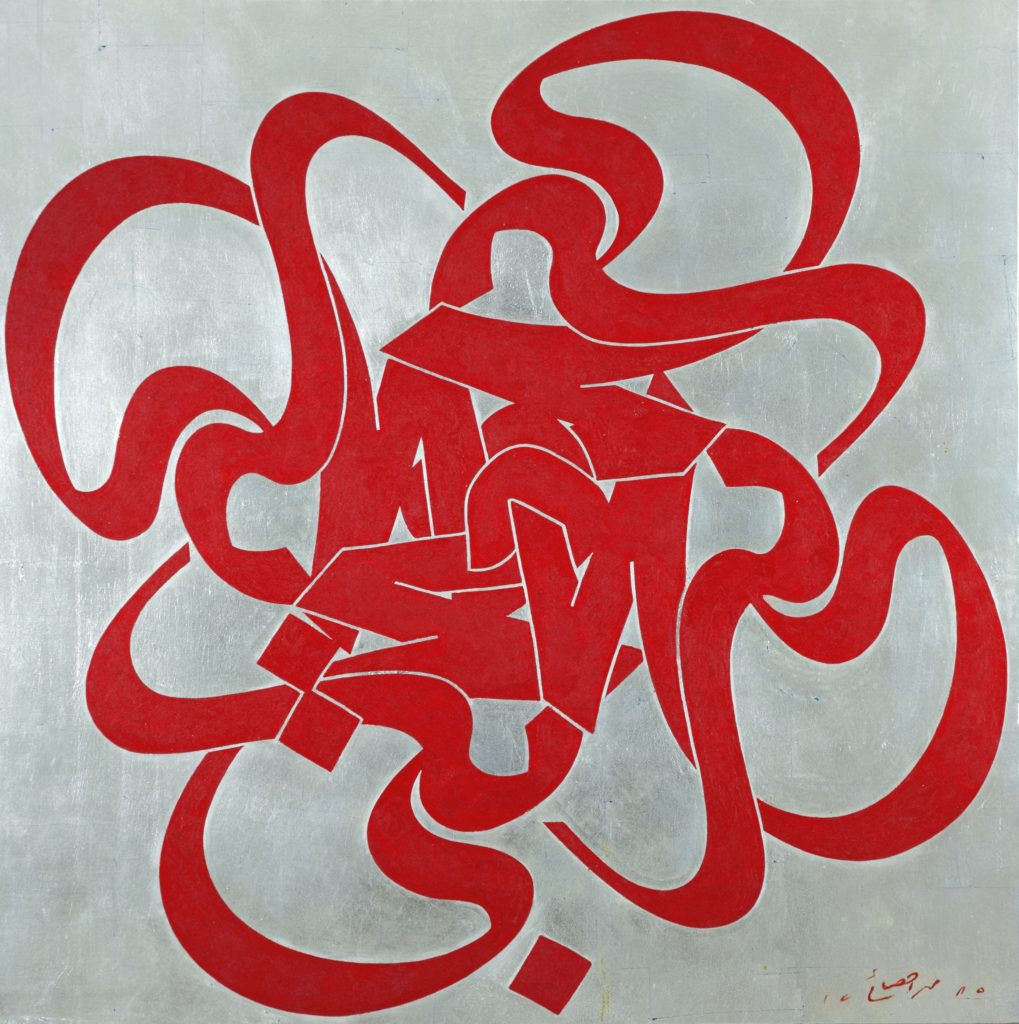Art & Exhibitions
Collector Mohammed Afkhami Builds a Bridge to Iran at the Aga Khan Museum
The financier-collector hopes to counteract stereotypical notions of Middle Eastern art.

The financier-collector hopes to counteract stereotypical notions of Middle Eastern art.

Brian Boucher

Iranian-born financier and collector Mohammed Afkhami vividly recalls the day in 2007 when he made a record-setting bid on Iranian artist Farhad Moshiri’s One world—Yek donia (2007).
In the piece, 90,000 Swarovski crystals form a seven-foot-wide map of the world, and it was on offer at Christie’s Dubai. Though its high estimate was just $80,000, the bidding quickly climbed to half a million dollars, Afkhami said during an interview at artnet’s offices ahead of the opening of a traveling museum show of works from his collection.
Then, he recalled, “Somehow, this uncontrollable hand went up, and I got hit!”

Ali Banisadr, We Haven’t Landed on Earth Yet (2012). © Ali
Banisadr. Courtesy Mohammed Afkhami Foundation.
In the end, he bought the piece for $601,000—more than seven times its high estimate—outbidding collector François Pinault in the process, said Afkhami (the auctioneer will neither confirm nor deny the identity of the underbidder). Only seeing the work in person persuaded him to vie for the piece, he said, since the photograph in the sale catalogue had struck him as so kitschy that he asked himself, “What idiot would buy this?” The artist’s auction high would be set the next year, at just over $1 million, according to the artnet Price Database.
Dubai-based Afkhami will send a selection from his collection on an international museum tour starting this week at Toronto’s Aga Khan Museum, where 27 works by 23 artists are featured in the exhibition “Rebel, Jester, Mystic, Poet: Contemporary Persians.” The show is organized by Fereshteh Daftari, an independent curator who was on staff at New York’s Museum of Modern Art for over two decades and also oversaw the show “Iran Modern,” at New York’s Asia Society, in 2013. Negotiations are now underway for other stops on the tour, with a final venue in the United Arab Emirates.

Parviz Tanavoli Blue Heech (2005). © Parviz Tanavoli. Courtesy Mohammed Afkhami Foundation.
Afkhami, the founder of commodities consultancy MA Partners, had started collecting in 2004, while stuck in Iran for some weeks during a delay in his travel paperwork. A friend suggested he visit some galleries. He started his collection by buying a work by Sirak Melkonian for just $500.

Mohammed Ehsai
Mohabbat (Kindness) (2006). © Mohammed Ehsai. Courtesy Mohammed Afkhami Foundation.
He now counts works by highly sought-after Iranian artists such as Ali Banisadr, Monir Farmanfarmaian, and Parviz Tanavoli, as well as blue-chip artists including Anish Kapoor, Yayoi Kusama, and Richard Serra. A book on his collection of Iranian art is forthcoming from Phaidon in May.
Shirin Aliabadi, by contrast, engages with Western fashions as they are absorbed by the youth of Iran in her “Miss Hybrid” series. In this show, one such satirical work shows a young Iranian woman with evidence of a nose job, dyed-blond hair, and blue contact lenses. Afkhami puts Moshiri’s map of the world, in another category, the “region-agnostic.”
The show includes heavy hitters like Shirin Neshat and Farhad Moshiri, but Afkhami is equally pleased to include relative youngsters like Morteza Ahmadvand and Hamed Sahihi, both born in the early 1980s and, Afkhami boasts, never before included in any international exhibition.

Shirin Aliabadi, Miss Hybrid 3 (2008). © Shirin Aliabadi. Courtesy Mohammed Afkhami
Foundation.
With the election of Donald Trump and, especially, since his executive order banning visits from Iran and six other Middle Eastern and African countries, a cloud hangs over initiatives like Afkhami’s, by which he hopes to foster knowledge of Iranian culture that breaks out of stereotypes. Speaking on Friday, before the executive order was announced, Afkhami expressed cautious optimism and a hope for Trump’s pragmatism.
But the relationship could turn adversarial, he acknowledged, and such a development could affect not only artists’ ability to travel between the two countries, but also the subject matter of their work.
“If it does get belligerent,” he said, “then you will find there will be another wave of expressionism through art.”
See works by Shirin Neshat and others at the first auction of artnet’s new Middle Eastern Art department beginning February 13.